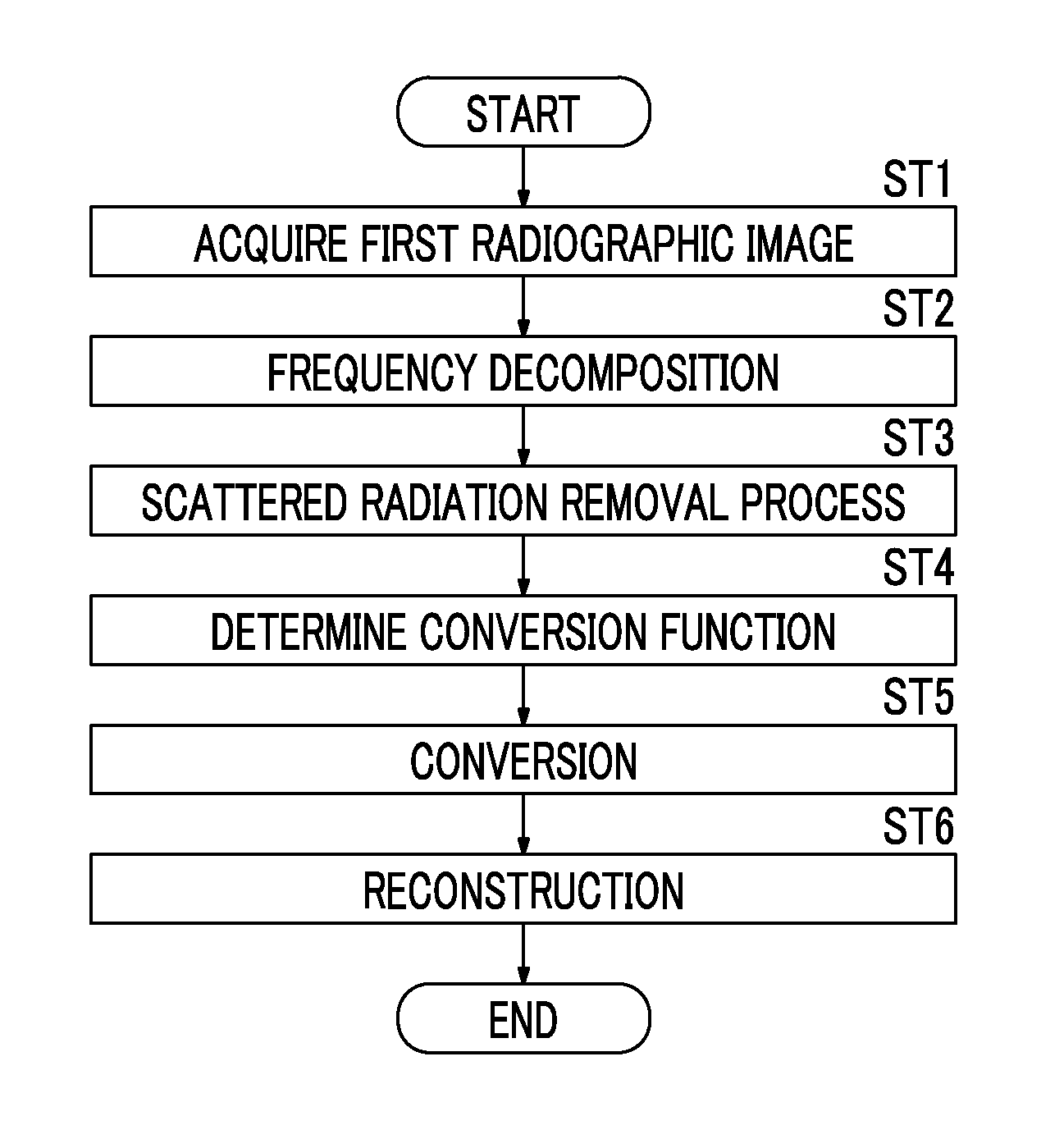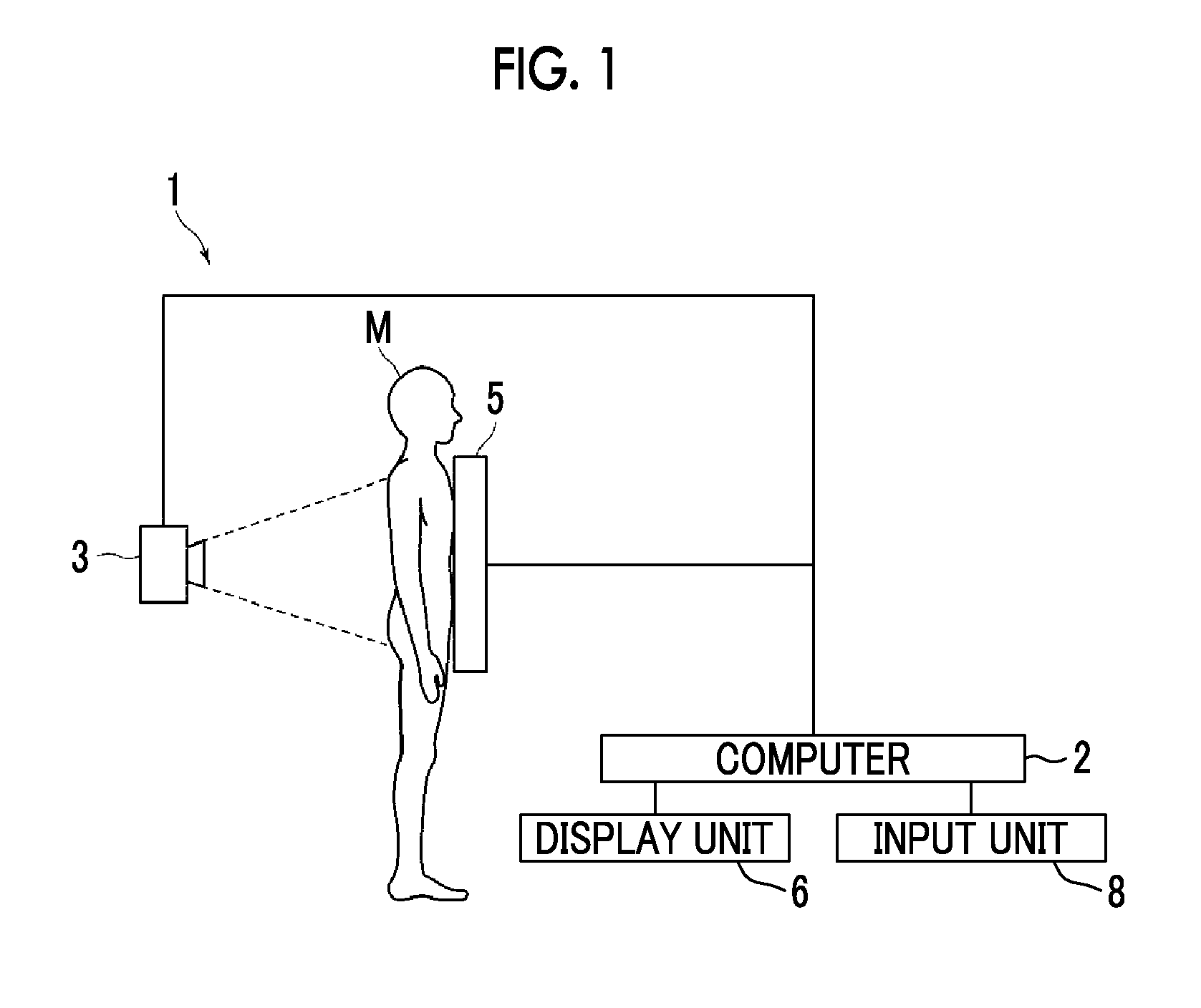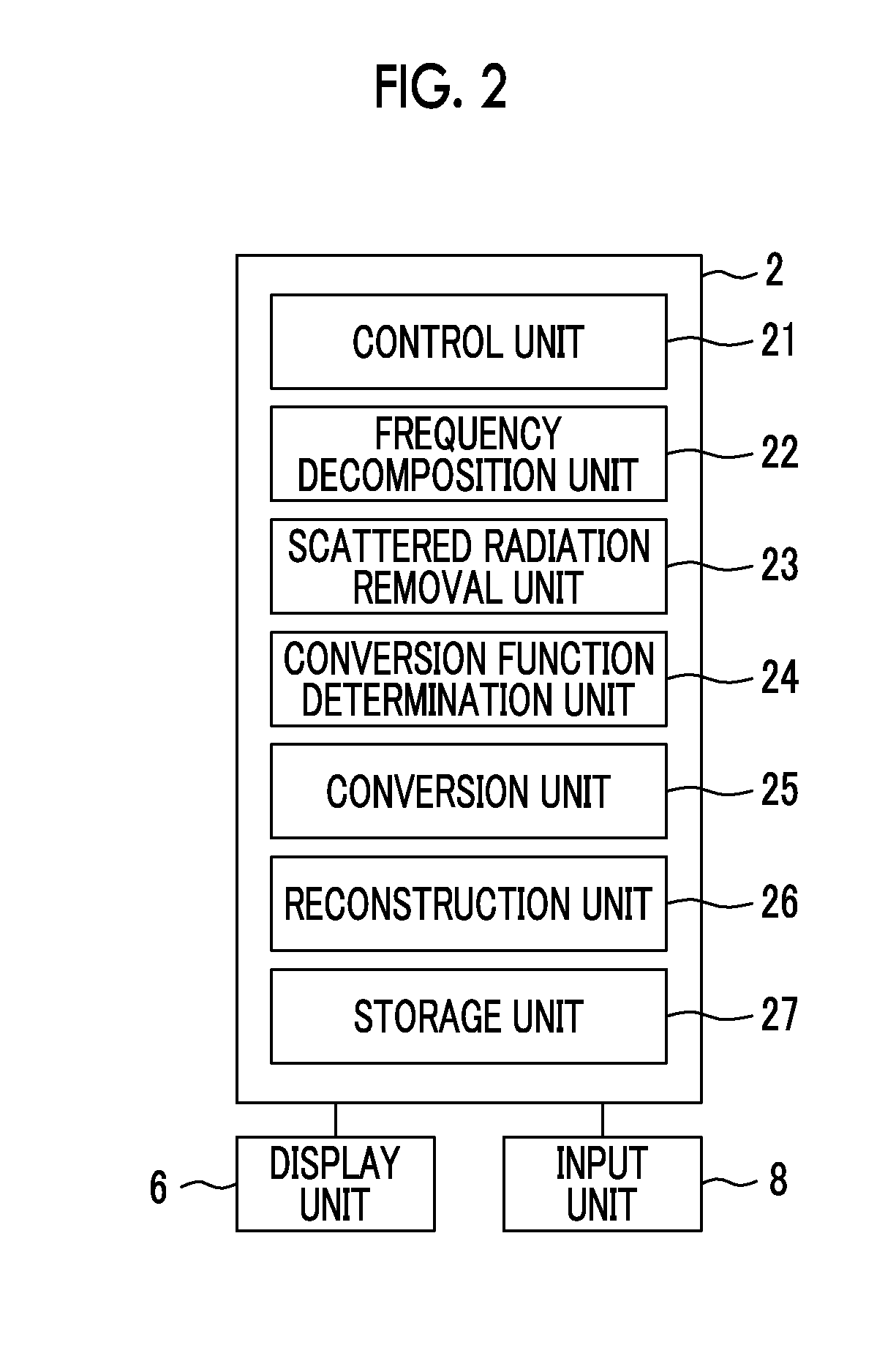Radiographic image processing device, method, and recording medium
a radiation image and processing device technology, applied in the field of radiation image processing devices, can solve the problems of difficult to determine a non-linear gain for preventing overenhancement, difficult to change the pixel value using a linear operation, and difficult to determine a unique gain, etc., to achieve accurate enhancement of the band image, accurate calculation and accurate removal of the scattered radiation componen
- Summary
- Abstract
- Description
- Claims
- Application Information
AI Technical Summary
Benefits of technology
Problems solved by technology
Method used
Image
Examples
first embodiment
[0087]In the first embodiment, a scattered radiation component is calculated from the radiographic image GL, which is a Gaussian component in the lowest frequency band, and a conversion function map is created. However, a filtering process using a low-pass filter may be performed for the radiographic image G0 to gradate the radiographic image G0, inverse logarithmic conversion may be performed for the gradated radiographic image G0 to acquire a radiographic image GL0 in which a pixel value has a linear relationship with the amount of radiation, and a primary radiation component and a scattered radiation component may be calculated from the radiographic image GL0. In this case, the created conversion function map has the same size as the original radiographic image G0, that is, the Laplacian component L0. Therefore, the conversion function determination unit 24 may reduce the conversion function map (which is referred to as R0 similarly to the above) having the same size as the Lapla...
second embodiment
[0095]In the second embodiment, a storage unit 27 stores the virtual model K of the subject M having the initial body thickness distribution T0 (x, y). The body thickness means the total thickness of a subject region except for an air region on the path of the emitted radiation.
[0096]Next, a body thickness estimation process will be described. FIG. 11 is a flowchart illustrating the body thickness estimation process. The virtual model acquisition unit 31 of the body thickness estimation unit 28 acquires the virtual model K of the subject M having the initial body thickness distribution T0 (x, y) from the storage unit 27 (Step ST31). The virtual model K is data which virtually indicates the subject M and in which a body thickness that follows the initial body thickness distribution T0 (x, y) is associated with each position on an x-y plane. In addition, structures (here, anatomic structures such as a lung field, a bone, and an organ) included in the virtual model K, the arrangement o...
third embodiment
[0118]As such, in the third embodiment, the scattered radiation removal process is performed using the virtual grid characteristics. Therefore, it is possible to obtain the same scattered radiation removal effect as that when imaging is performed using the grid that is assumed to be used.
[0119]In the third embodiment, the scattered radiation transmittance Ts and the primary radiation transmittance Tp are acquired as the virtual grid characteristics. However, only one of the scattered radiation transmittance Ts and the primary radiation transmittance Tp may be acquired.
[0120]In the third embodiment, the radiographic image G0 which is obtained by imaging using a grid may be a processing object. In this case, a process of removing a stripe pattern caused by the grid is performed for the radiographic image G0 and then the scattered radiation removal process is performed for the radiographic image G0. The scattered radiation removal process may acquire a radiographic image (first grid us...
PUM
 Login to View More
Login to View More Abstract
Description
Claims
Application Information
 Login to View More
Login to View More - R&D
- Intellectual Property
- Life Sciences
- Materials
- Tech Scout
- Unparalleled Data Quality
- Higher Quality Content
- 60% Fewer Hallucinations
Browse by: Latest US Patents, China's latest patents, Technical Efficacy Thesaurus, Application Domain, Technology Topic, Popular Technical Reports.
© 2025 PatSnap. All rights reserved.Legal|Privacy policy|Modern Slavery Act Transparency Statement|Sitemap|About US| Contact US: help@patsnap.com



